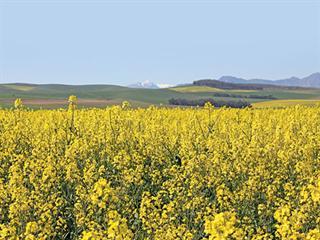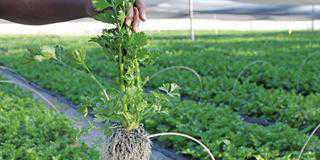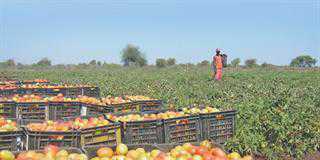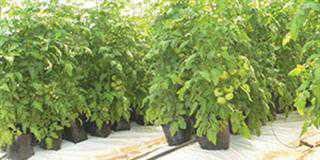
Canola is derived from rapeseed and was developed in Canada in the 1960s. The name is an abbreviation of ‘Canadian oil, low acid’ and was adopted because it was more ‘market-friendly’ than the word rapeseed. The latter comes from the Latin word rapum, meaning turnip. Turnips, cabbages, brussel sprouts and many other vegetables are related to canola.
Although canola is a summer crop in the temperate areas of the world, it is grown mainly in the Western Cape as a winter crop. In summer rainfall areas, it can be produced under irrigation during winter.
Description
- Roots – Canola has a taproot system. Growth is rapid after establishment, with 85% of the tap root in the top 25cm of soil.
- Stems – Stem height varies between 75cm and 175cm. The more widely spaced the plants, the more extensive the branches, which compensates for yield losses due to there being fewer plants.
- Leaves – Plants produce up to six large, waxy, blue-green leaves per stem. After emergence, canola develops a thick rosette of leaves close to the ground before the flowering stem appears.
- Flowers – Canola has small, yellow flowers and flowering starts on the main stem.
- Seeds/pods – The round black, brown or yellow seeds are relatively small, with 280 000 to 340 000 seeds/kg. Mature pods contain about 23 seeds. Pods on the lower parts of plants are about 30cm from the soil surface. Pods are prone to shattering if the harvest is delayed.
Climate requirements
- Temperature – Canola is produced in cool weather conditions. Optimum temperature for growth and production is 21°C. Temperatures below 10°C result in progressively poorer germination and emergence. Low temperatures impair protein production needed for germination and early seedling development.
- Rain – Rainfall between April and October should be at least 300mm for a yield of 2t/ha. Yields can drop lower than 1t/ha when rainfall is lower.
- Soil – Canola grows on most soil types, but is best suited to clay-loam soil that is not susceptible to wind erosion. Sandy soils should be avoided. Canola cannot tolerate waterlogged soils, so good surface drainage is essential. The ideal soil pH is between 5,5 and 7 (KCl).
Uses of Canola
Canola has many uses, both edible and inedible. It can be utilised for human consumption as canola oil, or blended with other vegetable oils for the production of various solid and liquid cooking oils and salad dressing. Canola meal, which is a good source of protein, can be used in animal feed and is recommended for up to 20% of the ration for chickens, dairy and beef animals. The meal is also a high-quality organic fertiliser that can be used by commercial organic farmers. In addition, canola is grown as a biofuel.
Canola cultivars
Numerous cultivars are available in South Africa. Days to flowering vary between 70 days for late planted (middle to end of June) and 120 days for early planted (May) crops. Plant diseases, growing length, yield potential and problem weeds are important aspects to consider when selecting cultivars. Cultivars may change annually because of ongoing research, therefore cultivar choice should be revised every season.
Source: Canola Production Guideline, compiled by the Directorate: Plant Production in collaboration with the ARC, published by the department of agriculture.













